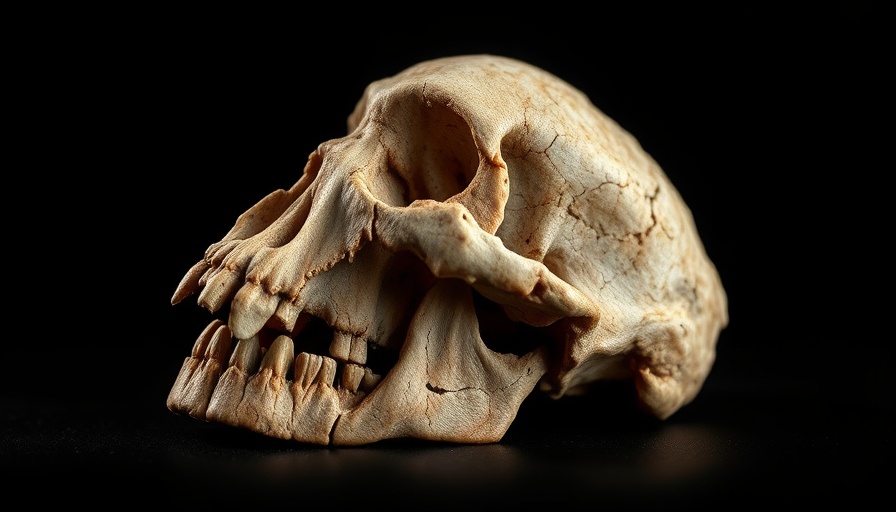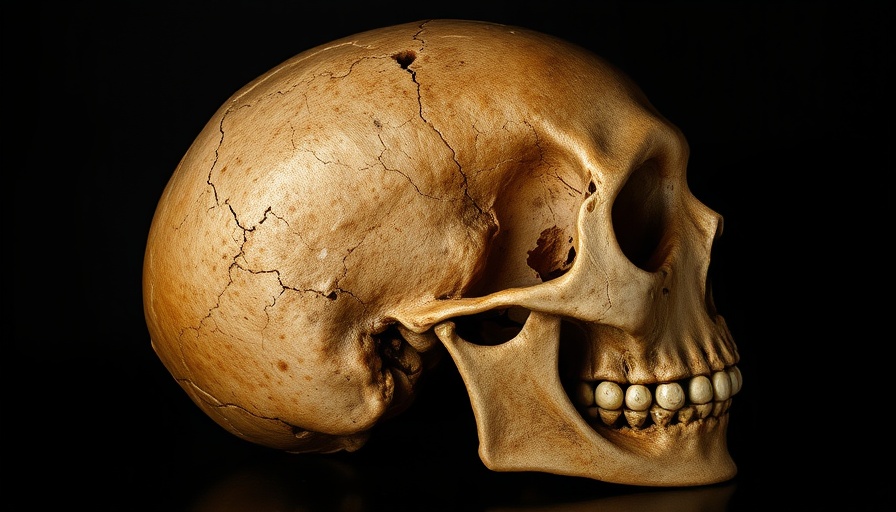
A Groundbreaking Discovery: Neanderthal-Homo Sapiens Interbreeding
Recent research has revealed the earliest known fossil evidence of interbreeding between Neanderthals and Homo sapiens, dating back 140,000 years. This astonishing finding was unearthed from Skhul Cave in Israel, where a five-year-old child's skeleton shows both Neanderthal and modern human traits. These morphological features challenge the long-held view that Neanderthals and modern humans were entirely distinct species, suggesting a more complex interaction.
The Implications of the Skhul Child's Traits
The skull of the Skhul I child, as named by researchers, displays cranial curvature akin to Homo sapiens but also exhibits characteristics such as an intracranial blood supply system and an inner ear structure typical of Neanderthals. "This discovery pushes back the timeline of human interbreeding, proving that Neanderthals and modern humans were mixing long before Europe’s later encounters," stated Prof. Israel Hershkovitz from Tel Aviv University.
Historical Context and Genetic Insights
Understanding the timeline of human evolution has fundamentally shifted in recent years, particularly with genetic studies indicating that 2-6% of the genome in non-African modern humans traces back to Neanderthals. Traditionally viewed as migrants from Europe arriving in the Middle East only about 70,000 years ago, new evidence suggests that these two groups coexisted and interbred in the Land of Israel far earlier.
Future Predictions: Where Do We Go From Here?
With this discovery, future research may delve deeper into understanding the patterns of human migration and interbreeding. Scientists may explore other archaeological sites for similar evidence, suggesting that interactions between Neanderthals and Homo sapiens could have been more widespread than previously believed. As research continues, evolutionary timelines may need further revision based on emerging fossil evidence.
The Relevance of This Research Today
The discovery of a child who symbolizes the intersection of two ancient lineages carries profound implications today. It highlights that human history is not just a linear progression but a tapestry of intertwined genetic narratives. Understanding these interactions can offer insight into human identity and heritage, resonating with audiences today who are interested in ancestry and biological connections.
Concluding Thoughts: Bridging Our Past with Modern Identity
This groundbreaking revelation of the Skhul child not only reshapes our understanding of human ancestry but also invites us to reflect on our connections today. In a world marked by diversity and cultural interplay, acknowledging our shared roots can foster a greater sense of unity and understanding among all individuals.
If you’re fascinated by human history and looking to explore more about our past, consider diving into related scientific studies. Stay informed about the latest findings in anthropology, genetics, and archaeology to enrich your understanding of the human experience.
 Add Element
Add Element  Add Row
Add Row 



Write A Comment